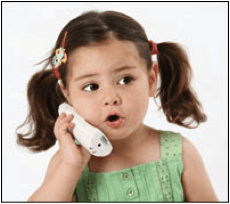ABA and SLP are two acronyms you might be very familiar with if you work in the Autism field. They are used quite often in conversation with other therapists. But if you are a parent with a child who has been newly diagnosed these terms might seem entirely foreign. Simply put, ABA or Applied Behavioral Analysis is the system of looking at the way behaviors are shaped and applying it to everyday life. SLPs or speech-language pathologists use the principles of ABA in their work on a regular basis. In essence, the therapies are very different but can be used to compliment each other. But how do they work together?
What is ABA?
The term applied in the ABA acronym means that behavior analysts’ try to develop skills that are socially significant and meaningful. For example, let’s say the therapist is trying to develop a child’s conversation skills. Due to the skill deficits demonstrated by children with Autism, therapists use behavior analytic principles to teach this type of socially significant behaviors. Second, the term behavior refers to the learner’s responses that therapists observe, measure, and monitor over time. It is essential to do this to ensure that these important behaviors, such as learning a language are developing as a result of therapy. For example, therapists are able to monitor a child’s progress with their language skills by observing and measuring concrete behaviors. These types of behaviors might include greeting classmates by name or asking for a preferred snack.
Finally, analysis refers to a therapist’s keen ability to look at the effect of environmental conditions that occur around a particular skill; then being able to modify said conditions to increase learning opportunities and skill acquisition.
The Goal of ABA
The objective of an ABA program is to equip students who are not currently learning like their peers with specialized instruction. Thereby, helping them to acquire the skills necessary to be successful in life. Over time, the goal is to gradually reduce or eliminate the individualized support and instruction. In other words, the therapist’s goal is to teach the children the foundation skills they need to respond accurately and appropriately throughout their lives.
How does an ABA Therapist and SLP work together?
The collaboration between an ABA therapist and an SLP are vital to enhancing both treatments and ensuring success for the child. Both professionals can be instrumental members of the treatment team with a similar end goal of increasing their expressive and receptive language skills. Their professional training, knowledge, and experience lend themselves well to providing input on appropriate speech and language targets.
Additionally, both professionals can provide insight on developmentally appropriate targets and individualize objectives based on the instructional materials or learning opportunities (e.g., a book vs. snack time). Also, the data collected by both can help everyone see how the child is performing across instructors.
The Importance of Collaboration
It is important not to overlook the benefits that ABA therapists and SLPs gain by being a part of each other’s team. Children with Autism have a spectrum of needs and as such require a spectrum of interventions. SLPs and ABA therapists are part of the professionally trained village it takes to help a child with Autism succeed. Within the collaboration process, it is essential that consultation time is spent discussing goals, progress, instructing and guiding providers so that deficits are targeted appropriately. It is invaluable having ABA providers attend speech-language therapy sessions, and, in turn, observing ABA providers during their sessions. Having a team of dedicated professionals all on the proverbial same page is the key to successful programming. With this in place, the sky’s the limit!

